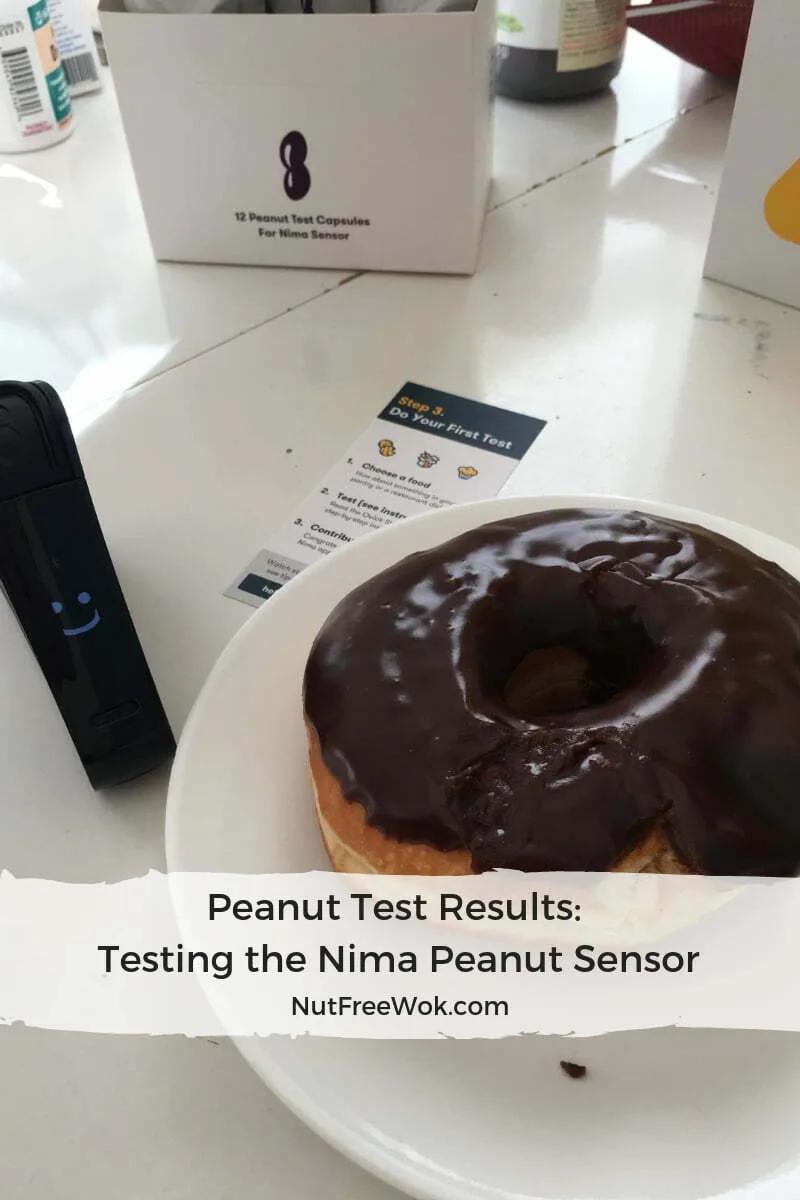
Major update: Nima Sensor was acquired a few years ago and no longer makes the peanut sensor or cartridges. I decided to leave this post up for now instead of deleting the post. Other allergen detection devices for consumer use might be available at some future point, and I may want to reference some of my detection challenges. May 14, 2024
Nima Sensor recently launched their Peanut Sensor and I gave it a test run. Some of my Nima peanut test results were pleasantly surprising or very upsetting!
Disclosure/Disclaimer: Nima Sensor sent me their device with 12 peanut cartridges. I purchased all the food items I tested and have no obligation to write about Nima or what to say, all opinions are mine. I’m sharing this experiences for informational purposes only, readers must continue to be vigilant to determine whether foods are suitable to eat by reading labels, contacting the food manufacturer, and/or consulting their medical professional team. SEE UPDATE BELOW 9/20/18
The huge news is that Nima Sensor recently launched their small portable device that you can use to test whether a tiny food sample contains peanuts or not. The idea is that you add a small sample of food into a testing cartridge, insert the cartridge into the device, wait a few minutes and then you have your peanut test results. I’ve been following Nima Sensor since they launched their gluten test and I’ve been looking forward to trying their Nima’s peanut sensor since we chatted at a conference.
Potential Nima Peanut Sensor Benefits
- I think of the Nima Peanut Sensor as the last test of the first bite. We still must read labels when available, talk to people who prepare food or contact food manufacturers, use our best judgement, and avoid cross-contact. But sometimes mistakes happen which is why we carry epinephrine. What if a Nima peanut test results could spare us from an accidental ingestion?
- Nima has an app with which smartphone users can upload their peanut test results from their tests of restaurant and packaged foods. As more people adopt Nima, more peanut test results will be shared on their app and you can see crowd sourced results of other peanut sensor users.
- The device can detect 10 ppm (parts per million) in a food sample 98.8% of the time. 10 ppm is equal to 0.001 gram (or 1 mg) peanut in a standard serving size of 100 gram according to their quick start guide. 1 mg is a really small amount considering one peanut can weigh between 600 to 1000 mg. There is no known or agreed upon threshold of allergen safety, however your doctor can give you advice.
- If you share meals or if you share life with people who are skeptical about food allergies, having an objective device share peanut test results might be an unemotional way to seque into a productive conversation about what can they do to keep you or your loved one safe.
- We all have our safe foods and routines when we’re at home but sometimes we have to travel or dine out for work or school or unplanned circumstances or awkward social situations come up and a Nima peanut test result might be informative.
Nima Peanut Sensor Limitations
- The Nima Sensor can only detect the allergens sampled. Even if no peanut is detected in the sample, Nima can’t guarantee your safety for the rest of the product or dish that isn’t tested.
- The Nima Peanut Sensor may be of limited use for people if their severe allergies are not peanut or if they have multiple severe food allergies.
- It’s also not a substitute for best food allergy management practices such as reading labels, contacting manufacturers, and avoiding cross-contact. It’s absolutely critical to follow best practices to avoid allergens.
- It’s important to follow instructions on how to use the device precisely as samples which are too large, small, dry, hard, or oily will not give accurate results.
- According to the manual, Nima will incorrectly give a “peanut found” result for sesame, tamarind, tomato paste/sauce, eggplant, cayenne, paprika, and NOS energy drink.
- Also according to the manual, Nima will incorrectly give a “smile” result for solid chocolate (bars and chips that aren’t melted or ground) or alcohol.
- There’s also a statement regarding peanut oil. Our family avoids all peanut oil, regardless of whether it’s refined or not, so the statement is not significant to me but may be helpful if you were wondering. “You can use the Nima Peanut Sensor to test peanut oil or dishes that may be cooked in peanut oil. Peanut oil is refined enough that the peanut protein is broken down enough that it should not affect people with peanut allergies but if there is peanut remaining, Nima may detect it.”
- The Nima sensor also makes noise, takes a few minutes to run on a level surface. The entire process makes it challenging to test discretely.
Food Allergen Label Limitations
We know to avoid if the product contains peanuts or when there is an allergen advisory to warn us. But allergen advisories are not required, manufacturers are not required to have a website, customer service, or disclose anything, and the wording for allergen advisories are not regulated so “made in the same facility as…” doesn’t mean that a product is safer than something labeled as “made on shared equipment with…” The absence of an allergen advisory could mean that there is an undisclosed risk or no risk at all. If this new to you, please read my blog post about reading ingredient labels for food allergies.
What Should I Test?
Having been an allergy mom since 2006, our home is pretty much nut-free except for my younger son’s nut OIT doses. We haven’t had any unexpected reactions to our food so whatever we’re doing to read labels and prevent cross contact have been effective for us.
It was a bit of a stretch for me to think of what to test. What do we wish we could eat if truly peanut free? What can I reasonablely test without wasting money or time? How would I feel about unexpected “peanut detected”? Would we confidently eat things that get the smiley face approval?
I deliberately bought some high-risk foods that I knew would have a risk of cross-contact with peanuts and I also tested things that I had around the house that I was certain were made in a facility without peanuts.
*Disclaimer* I strongly caution you not to take the following peanut test results as a guide on what’s safe to eat because the Nima test results are only regarding the samples I tested. I am sharing the peanut test results for the sake of discussion regarding Nima Sensor as a device and it is not my intention to green-light (or happy face) any foods or products.
Supermarket Donut Peanut Test Results
We used to buy donuts from Krispy Kreme until they started adding peanut butter and tree nut covered donuts to their menu. Supermarket donuts are pretty basic and are in a case with lots of other donuts except I did see a tray of something covered with almonds on a lower shelf in the corner, far away from the chocolate donuts. Who doesn’t love a donut?
Result: 🙂 The peanut test result was literally a smiley face, which is adorable. We ate the donut without issue. However, the reality is that section of the donut that I tested is safe and I wouldn’t have known if someone had grabbed an almond pastry and then accidentally touched the chocolate donuts. I might consider talking with the bakery manager first and then ordering a box in advance.
Ice Cream Peanut Test Results
A truly nut free ice cream is extremely rare. I’ve talked with many ice cream companies and most wouldn’t claim to be nut free. Usually they’ll run the plain flavors (made without obvious allergens such as nuts or cookies) first, schedule the highly allergenic flavors later in the week, clean thoroughly, run allergen tests, etc.. It’s not as ideal as a nut free ice cream manufacturing facility and mistakes do happen.
I picked Trader Joe’s Chocolate Ice Cream to test even though I’ve called before and know that they are made in a shared facility or on shared equipment with peanuts and/or tree nuts. I also bought some Breyer’s Natural Vanilla, they are not made in a nut free facility but we’ve safely eaten them before.
Results: 🙂 for both ice creams, I was pleasantly surprised. I have seen enough ice cream recalls due to undeclared allergens to remain skeptical and test every new carton at the very least. What was sweet was one of my sons said the Breyer’s Natural Vanilla ice cream tastes like my homemade vanilla ice cream. My mama’s heart was so happy because that was my goal to make homemade vanilla ice cream that tastes like Breyer’s. <3
Popped Popcorn Peanut Test Results
Popcorn is one snack food that I always check for allergen advisories because they are sometimes made on shared equipment with peanuts and tree nuts. We cannot safely enjoy Cub Scout popcorn, popcorn in a tin, and other popcorn snacks due to allergen advisories.
My friend shared some Trader Joe’s Movie Theater Popcorn with me and it was really good. I had never purchased it before because I had called Trader Joe’s years ago and was told that they process peanuts in the facility.
What if my kids were at a friend’s house and the friend offered it to them? The label only states that the popcorn contains milk and is gluten free, which wouldn’t raise any red flags regarding nut allergens. How would anyone know whether it’s safe or not based upon the information on the label?
Results: 🙂 This might be a safe option for our family, I would have to call and double check to see if there have been any changes since the last time I called.
Asian Sauce Peanut Test Results
I happened to have an unopened jar of Lee Kum Kee Black Bean Garlic Sauce that I purchased recently. We’ve used this product safely for years and trusted their allergen statement online: “Our manufacturing facilities do not handle peanuts and its derivatives” and they don’t make any products with tree nuts (except coconut) as far as I know.
However I happened to check their products page and noticed that they have a new product which is a peanut sauce. This is a great reminder that companies have the right to introduce new products containing any ingredient or allergen and do not have an obligation to notify consumers.
I immediately called Lee Kum Kee to inquire. When I asked to speak with someone to talk about some allergen questions, the guy who answered the phone said he’s a temp so he doesn’t know and the person who can talk with me is at lunch (it was 1:30 pm, really?) and could I call back in an hour. I had a bad feeling that call was a bit evasive, which is a bad feeling. The quality of a company’s customer service needs to be excellent in order to be credible for people with food allergies.
Results: PEANUT DETECTED Oooooooo noooooo! Lee Kum Kee’s allergen statement about not using any peanuts in any of their products is contradictory since they make a peanut sauce. Their black bean garlic sauce which does not have peanuts as an intended ingredient but Nima detected peanuts.
I felt hurt. Why did they say they don’t use any peanuts or its derivatives and then add a new peanut sauce to their product line? Clearly there’s a peanut allergy issue and until that resolves, I will remove all Lee Kum Kee products from my cupboard.
And I’m also wondering whether a Nima “peanut detected” test result on a recently purchased and just opened package are enough reasons to contact the FDA regarding mislabeling and potential recall?
Chocolate Chip Peanut Test Results
What do I do in a state of despair? I turn to chocolate, which I love as foodie-Sharon but am extremely wary of as an allergy mom. I found a bag of Guittard semi-sweet chocolate chips, which are made in a facility free of peanuts according to their very detailed allergen statement online (chips are “Made in a facility that is free of peanuts, eggs, wheat, shellfish and fish”). I melted a few chips in the microwave so that they’re soft and tested them.
Results: PEANUT DETECTED I want to be in denial, but I won’t serve these chips to my children. It’s a remote possibility that my bag of chips was made prior to when Guittard updated their allergen policy. It’s even less likely that we introduced peanuts into the bag of chocolate chips. However, I would not make any conclusions about the safety of Guittard chips in general until I buy a new bag of chips to test again or they clarify their statement.
White Chocolate Chip Peanut Test Results
I had a bag of Trader Joe’s White Chocolate Chips, which I know are made in a facility without peanuts or tree nuts. Since the white chocolate chips are a seasonal item, I call every year in case they’ve changed manufacturers. Both kids like this chocolate and we have had no issues using Trader Joe’s chips.
Results: 🙂 I was thrilled, who knew running Nima peanut tests would be such an emotional experience? I had to stop testing because it was late at night and I only had 5 more test capsules left. I needed to think about what else did I want to know.
Round 2: Cross-Contact of Peanut Test Results
Besides testing different products, I wanted to see if the Nima could detect cross-contact that might occur when people serve or share food. I crushed some peanuts and then used a spoon to stir the crushed peanuts in a bowl vigorously. Then I tapped all the peanut crumbs off the spoon and used the peanut contaminated spoon to divide a spoonful of ice cream, and then I scooped a tiny amount of Breyer’s vanilla ice cream into the Nima. It detected peanuts.
I thought I might have made it too easy for the Nima to detect peanuts so I repeated my experiment except I gently stirred the peanuts, tapped the peanut crumbs off the spoon and checked to see that the spoon only had a tiny oily smudge on it. I used the spoon to stir a scoop of ice cream and tested a random sample. It detected peanuts.
I could challenge the Nima with more IRL (in real life) peanut cross-contact scenarios. However, I concluded that it might be very difficult to introduce an undetectable amount of peanuts into a food sample via normal household cross contact. I decided to stop and share the three remaining capsules for my husband and two sons to try.
Overall Impression of Nima’s Peanut Test Results
We do our best practices to avoid our allergens: contact manufacturers, read labels, prevent cross-contact, talk with restaurant staff and most of the time the food is safe. Despite our best practices, people still have an allergic reaction on rare occasions and that’s why we carry epinephrine.
The Nima Peanut Sensor disrupts our food allergen avoidance routines because it makes us think. We continue to do our best practices AND have the option to run a Nima peanut test.
- Do we test foods we are certain are safe via typical food allergen avoidance or not?
- If we aren’t sure, would testing give us more confidence?
- In either case, if Nima detects peanuts, then hallelujah, we know not to eat the food and we have saved ourselves from a possible reaction.
- If it doesn’t detect peanuts, then can we have the same amount of confidence eating it as before, when we just relied on our best allergen avoidance practices without a Nima Peanut Sensor?
All of my food peanut test results were unexpected. Donuts, ice cream, popcorn, and Trader Joe’s white chocolate chips resulted in happy faces. I was so disappointed by the Lee Kum Kee black bean sauce test results. It’s a harsh reminder that manufacturers may change how they handle allergens or add new products without warning. On the other hand, we really need food manufacturers to use the best safety and allergen management protocols and labeling to keep food allergic consumers safe.
My friend Betsy volunteered to run some tests with her Nima peanut sensor and will share her peanut test results with me. I asked her to test some Guittard chocolate chips and will update this post if we have any additional interesting results. Thank you Nima for inventing your sensors and sharing your latest product with me to try at home.
UPDATE 9/20/18 – I’ve been emailing with Nima Sensor about these results. I asked them to test Lee Kum Kee black bean sauce and Guittard chocolate chips and I’m sharing the following results from Nima, “Just an update, we used the peanut sensor and the capsules at the office and tested Guitards chocolate chips and the Lee Kum kee Black Bean Garlic sauce, as well as the Kikkoman Black Bean Garlic sauce and got smiles.” I will continue to troubleshoot with them, update the software, and see if there are any other explanations for my unexpected results.
Regardless of the Nima Peanut Sensor test results, I personally would continue to use Guittard’s products with confidence but I am still very concerned that Lee Kum Kee added a peanut sauce to their product line without updating their allergen statement. Had I not gone thru this exercise, I wouldn’t have noticed that LKK added a new peanut sauce.
What do you think? Would you be an early adopter of the Nima or would you wait and see? Tell me in the comments.
Thanks for reading, please show your support for Nut Free Wok!
The best way to see every post or recipe is to subscribe to Nut Free Wok’s email subscription (be sure to respond to the confirmation email). You will to be notified by email next time I publish another post or recipe and I won’t send you spam or share you email with anyone.
If you enjoyed this post, please use the social media buttons below to share with others. I am on Facebook, Twitter, Pinterest, and Instagram as @nutfreewok and it’s great to chat and interact on social media too.
Disclosure
I may mention the names of stores and/or brand names of products that I use, I have not been paid by any of the above companies to mention them. I share products and sources which I use and think may be helpful to readers, all opinions are my own. Please note that manufacturing practices and ingredients can change at anytime without notice and readers are always responsible for assuring allergen safety before buying or consuming foods. NutFreeWok.com is a participant in the Amazon Services LLC Associates Program, an affiliate advertising program designed to provide a means for sites to earn advertising fees by advertising and linking to Amazon.com.

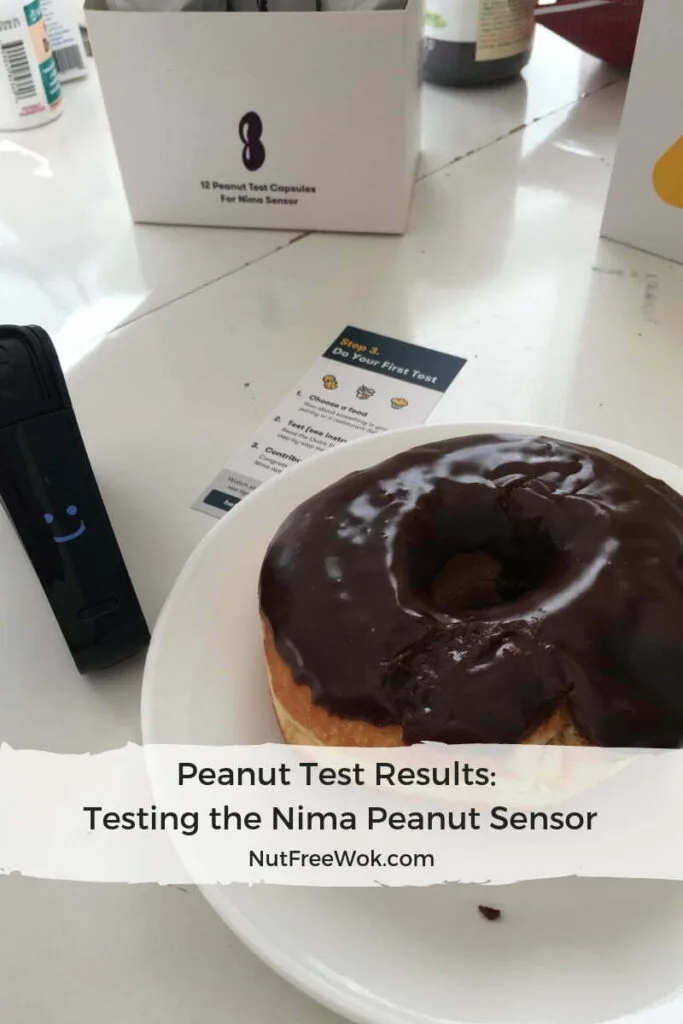
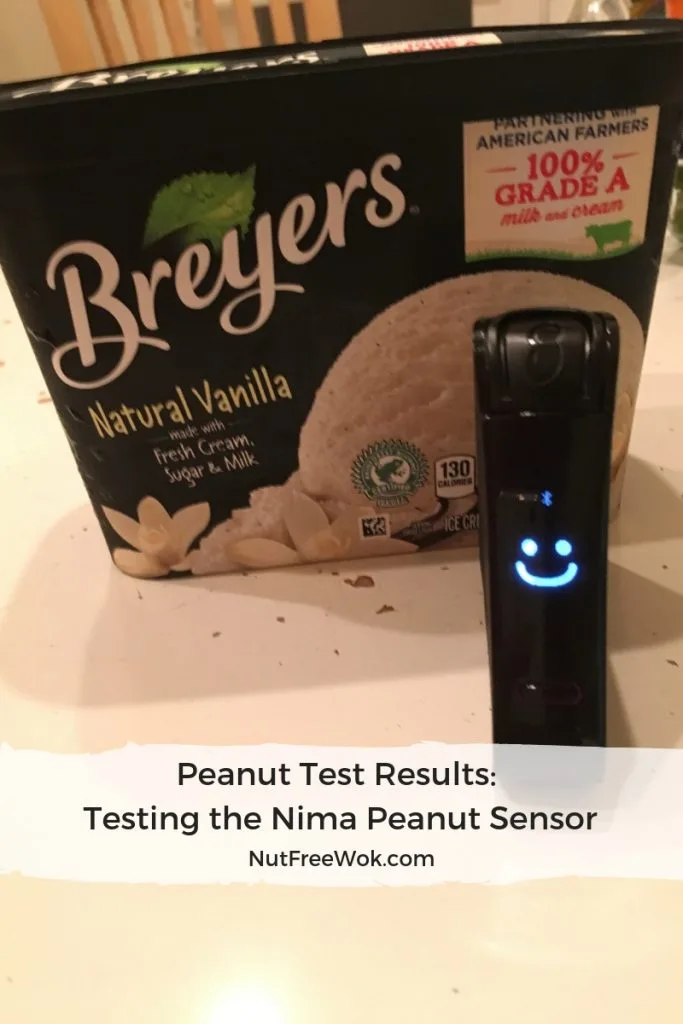
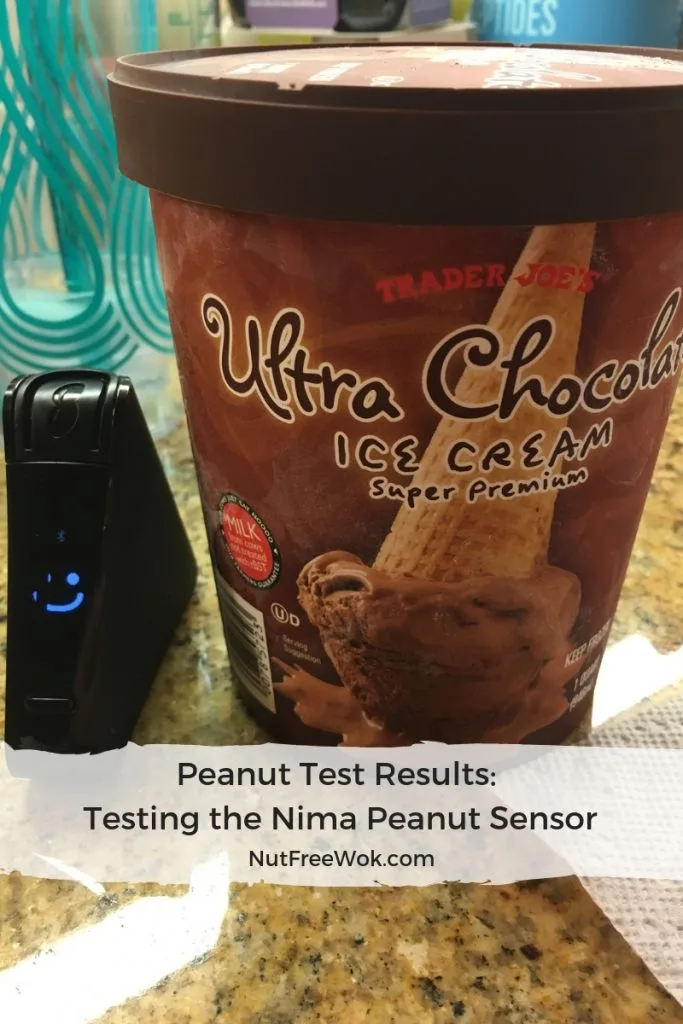
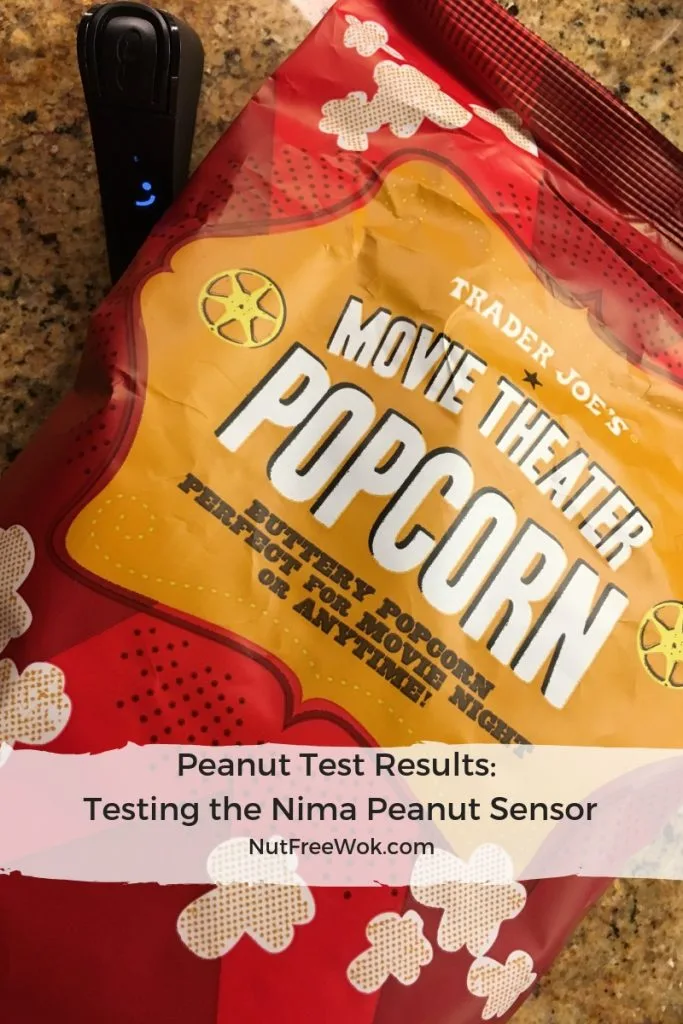
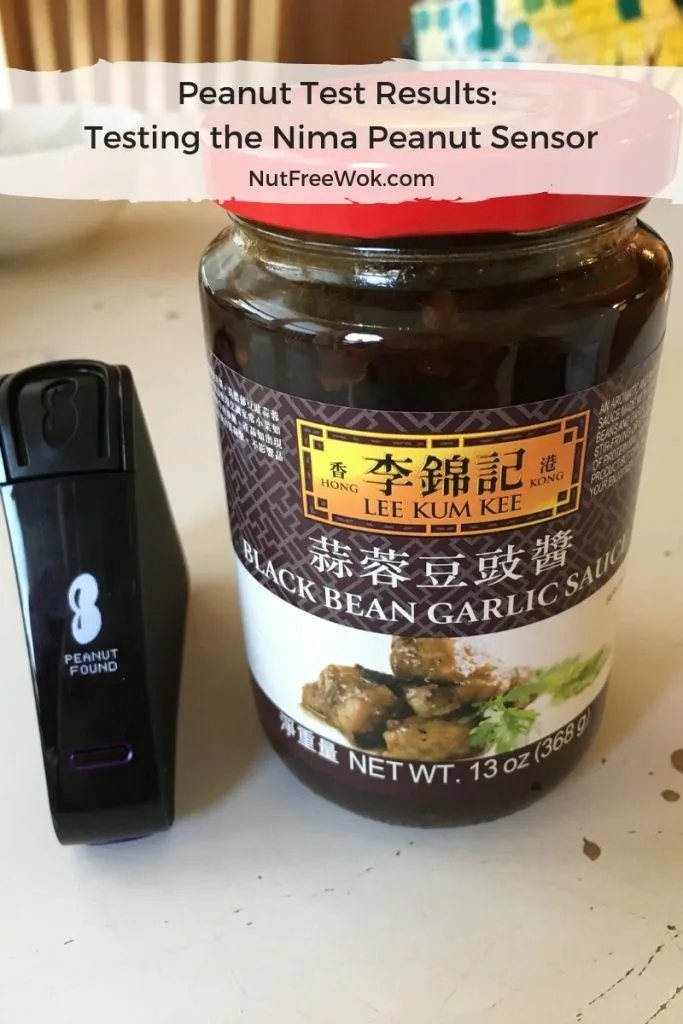
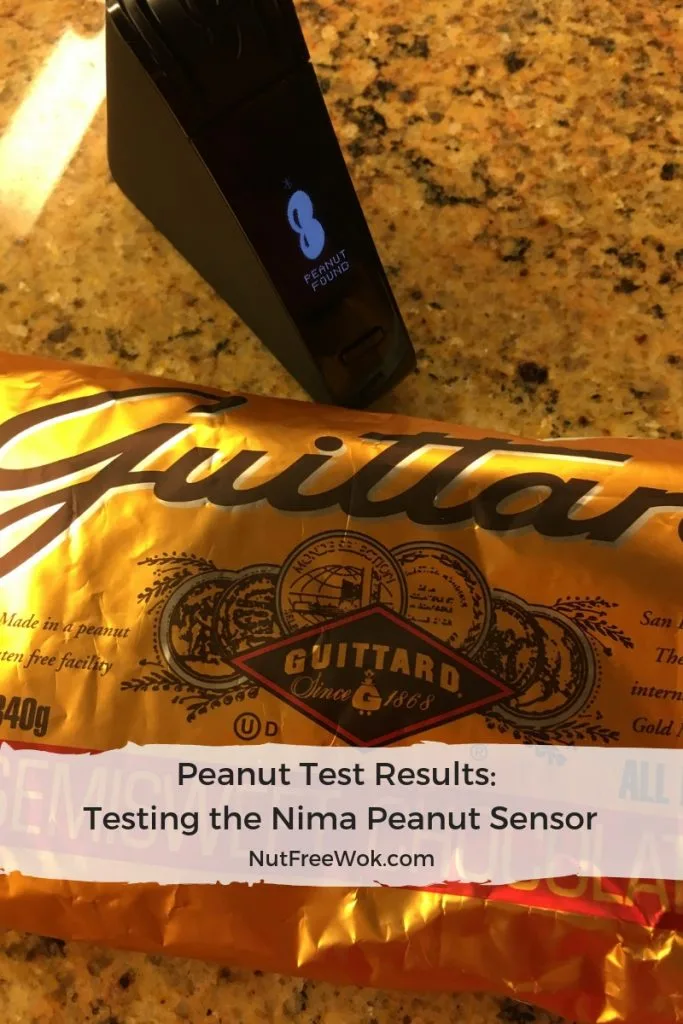
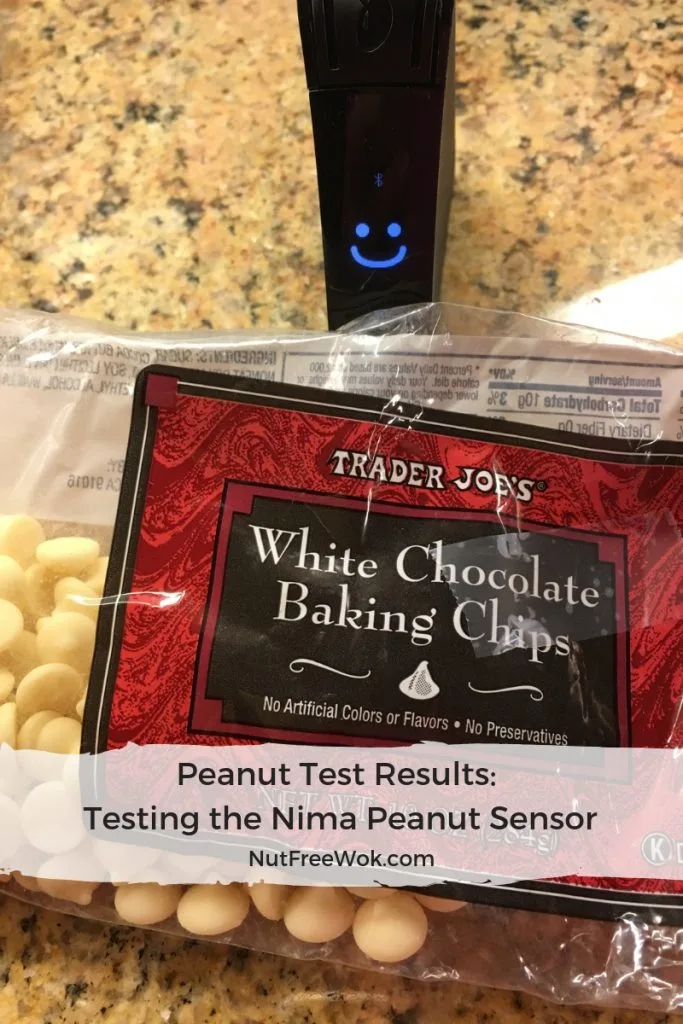
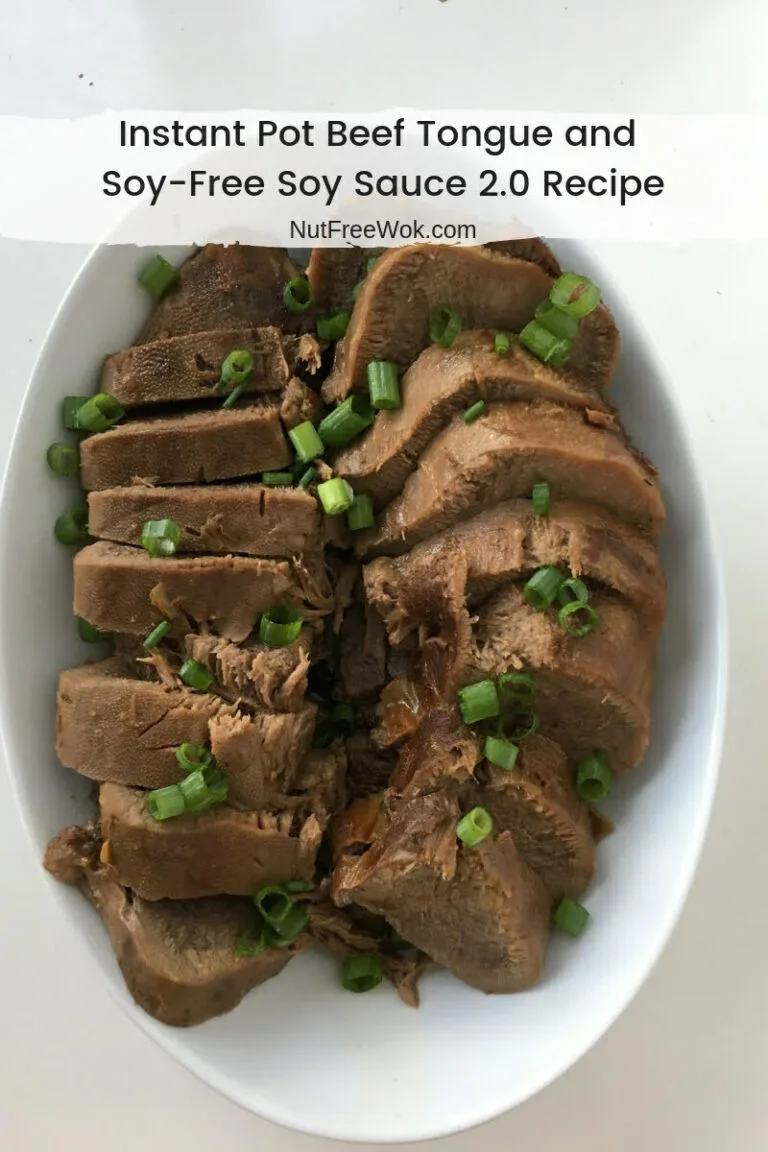
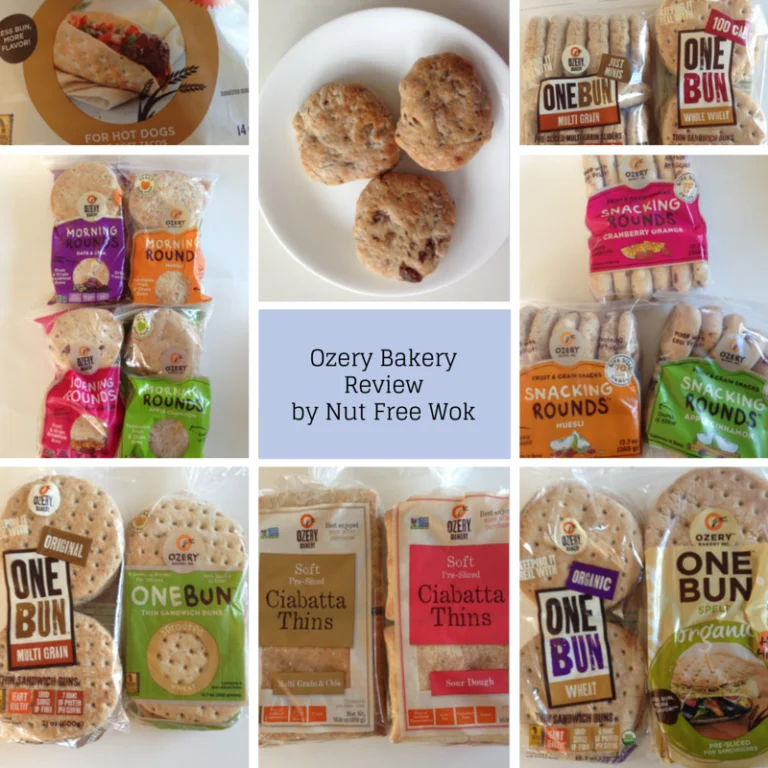
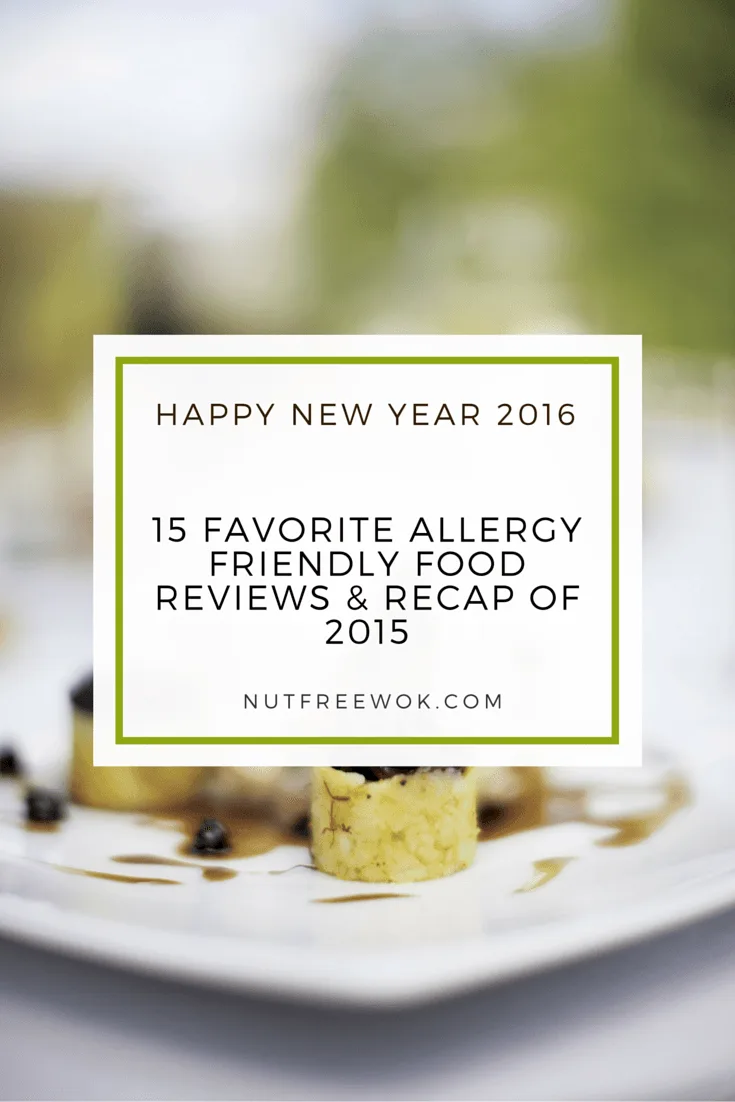
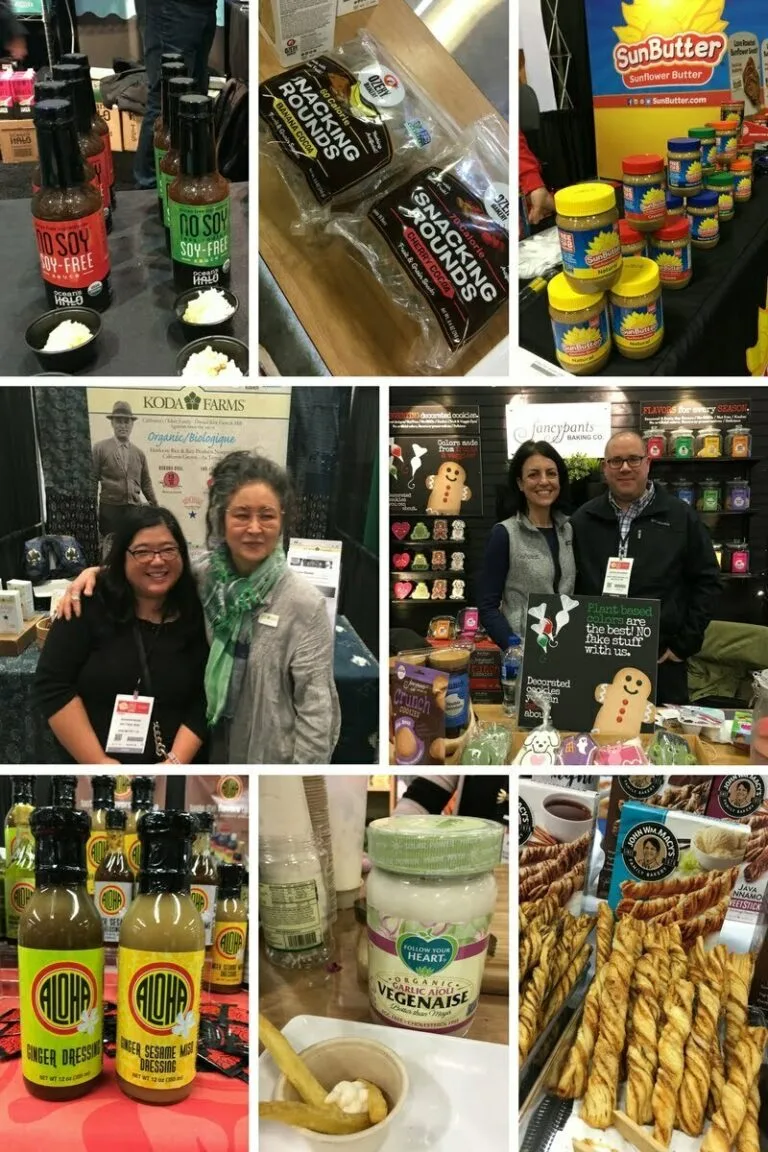
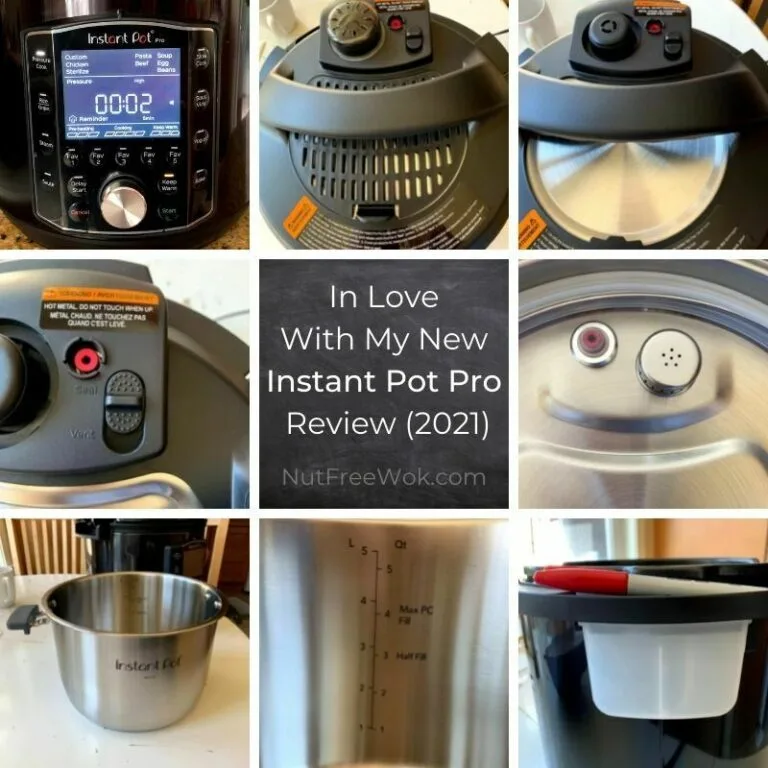
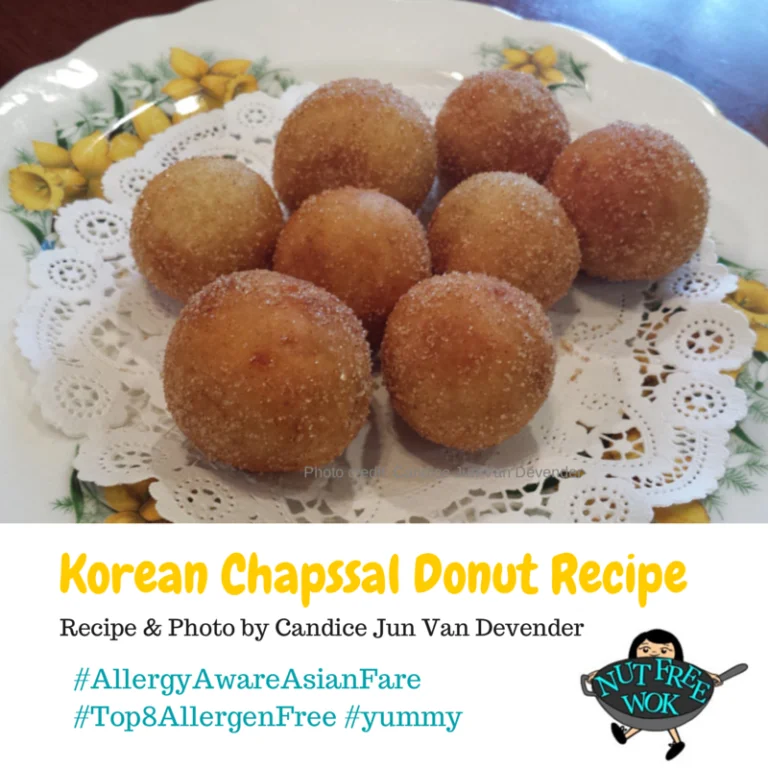
Sharon, I hope you are still monitoring this thread. I read this article, and many other reviews of the Nima Peanut Sensor, and was ready to buy it, only to discover the company has gone out of business!
We are planning a trip to Lijiang Province in China with family members who have a peanut allergy. I know there is probably no foolproof way of testing food for peanut contamination, but are you aware of any other products out there that can be used in a restaurant? I have been researching lateral flow and PCR test strips, and was ready to order those, only to discover that they need to be stored in a refrigerator.
Any help you can give would be greatly appreciated!
Thanks for letting me know that this post needs an update! We communicated by email, I hope you all have a safe trip and let me know how it goes when you get back.
Thank you for sharing. Headed to Taiwan and interested in your direction. Any help you could share would be greatly appreciated.
Hi Kari, I don’t have specific information about how to navigate travels to Taiwan except to be sure you’re able to communicate with restaurant staff and carry epi. You are welcome to post a question in Nut Free Wok & Friends or on my FB page.
Thank you so much for the review. We pretty much stay away from Asian foods and sauces because there are usually peanuts produced somewhere in the facility. I was shocked about Guittard’s though. I suspect that because they HAD used tree nuts that there was cross contamination of those before they got to Guittard to use. That said, as of 2019, Guittard is completely tree nut and peanut free. https://www.confectionerynews.com/Article/2019/06/12/No-Nuts-Guittard-gains-nut-free-status-across-production-plants
Excerpt of allergen statement from LKK’s as of 8/22/19 – “Products produced by the U.S. manufacturing facilities are free of peanuts and its derivatives. For all products made in China, peanuts and its derivatives exist in the same facilities and may share the same production lines.” I realize you’ll have thrown out that jar of sauce from last year’s test, but it would be interesting to see if the reason for the different results is that you tested a jar made in China vs Nima testing a jar made in the US.
If you find out anything further about the LKK black bean sauce I’d like to know! I just used it to make spareribs for my ANA PN son last week and everything was fine.
I don’t know what happened with my results but I asked Nima to test it and they’re results were negative, which is reassuring. However the reality is that LKK is making a peanut sauce so there will be a chance of CC unless we can confirm that the peanut sauce is made in a different facility.
Thank you so much for this post. We have been curious about this and it’s effectiveness. Ever since my daughter reacted to the sprinkles that were on her cupcake (that cleared all other tests but the sprinkles were NOT from a nut free facility) I have just been even more on edge. I may have to give this a try. I do want to let you know about a resource I just came across- it was based on a friends recommendation. I actually really liked it for me (high protein) and my daughter (allergen friendly) Melanie Wildman’s, The Ultimate Protein Cookbook. You might like it! And thank you again for this post!
I’m sorry to hear your daughter had a reaction, hopefully all is well now. Which sprinkles did you use? One would think that sprinkles are used in such small amounts and how is it possible for cc to occur??? Food allergies are definitely challenging, I’m all for extra tools, transparent labeling policies, anything that give us more information.
I recently found A La Mode Ice Cream (peanut, tree nut, and egg free!) and absolutely love it. Would this be a good option for your family? A little hard to find, depending on your area, but it’s ship-able, too. Hope this helps!
Thank you, Liz, for the suggestion. I have heard about A La Mode ice cream and totally wanted to go when we were in NYC to support their efforts and just couldn’t squeeze it in. My older son is not allergic to egg and my younger son is basically able to eat eggs freely in his diet now, and there’s a nut free ice cream company called Strauss available locally. <3
Hi Sharon!
This is so cool! I saw on their site that Nima can’t test solid chocolate for some reason, could this be why the Guittard tested positive? I’m in denial:) . They’re such a go to for us.
Hi Kate, I’ve emailed Nima Sensor folks and they retested the Guittard and found it to be negative, no peanut detected, which is a huge relief in my mind too as my kids ate baked goods from that batch of chocolate without reaction. They’re currently troubleshooting what might have actually happened.
Great review, thank you for posting it! I had one question since I too am using Lee kum Kee – Since Nima says in the manual it will have a false positive response for sesame – I was wondering was that a listed ingredient on the Lee kum Kee sauce?
Hi Meghan, the black bean sauce doesn’t contain any sesame in the ingredients. I’ve also been emailing back and forth with Nima Sensor folks about this and they tested a fresh jar of LKK black bean sauce and it was negative (no peanut detected) which is reassuring. However, I think we need to reach out to LKK to clarify re: their production of their new peanut sauce.